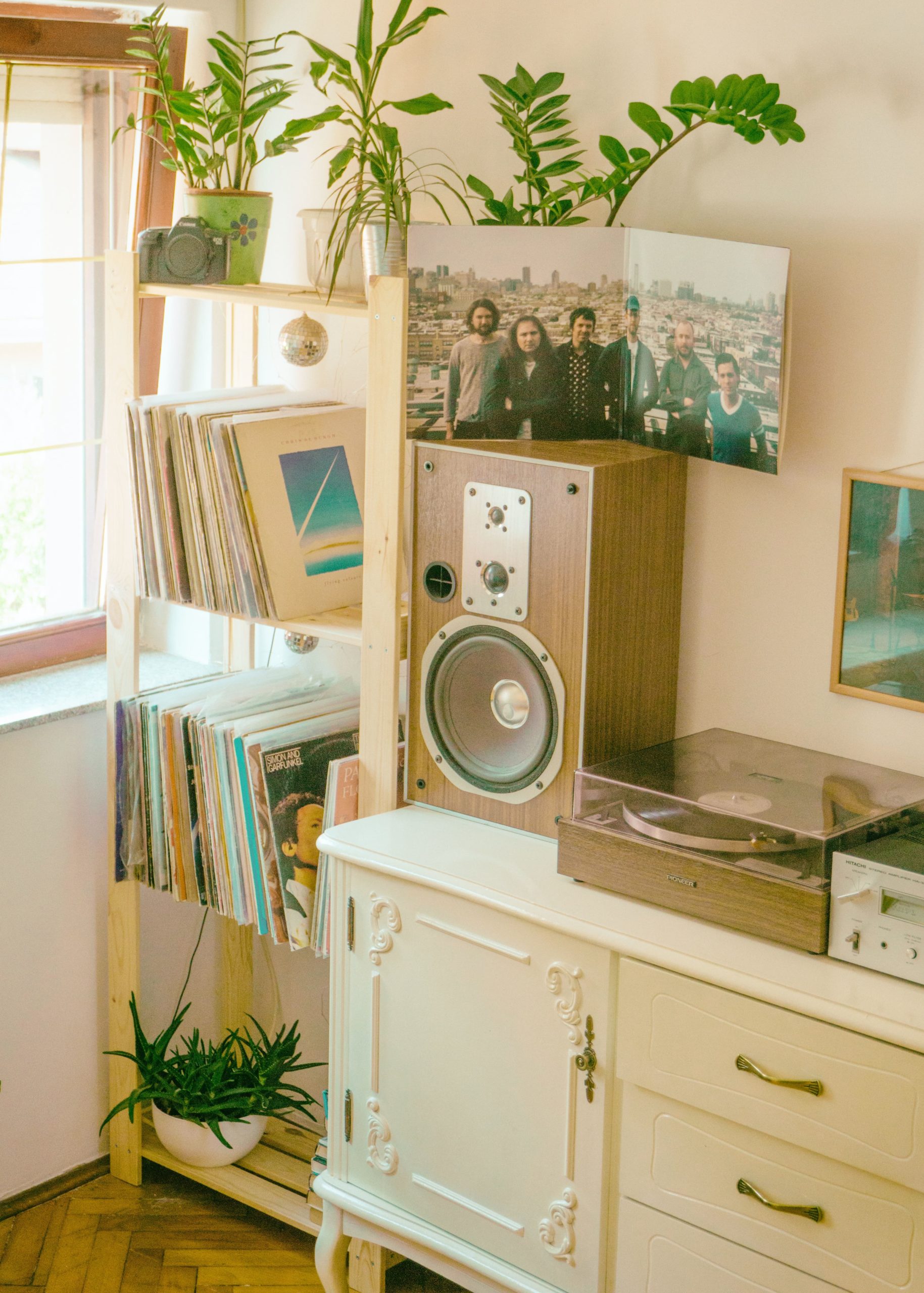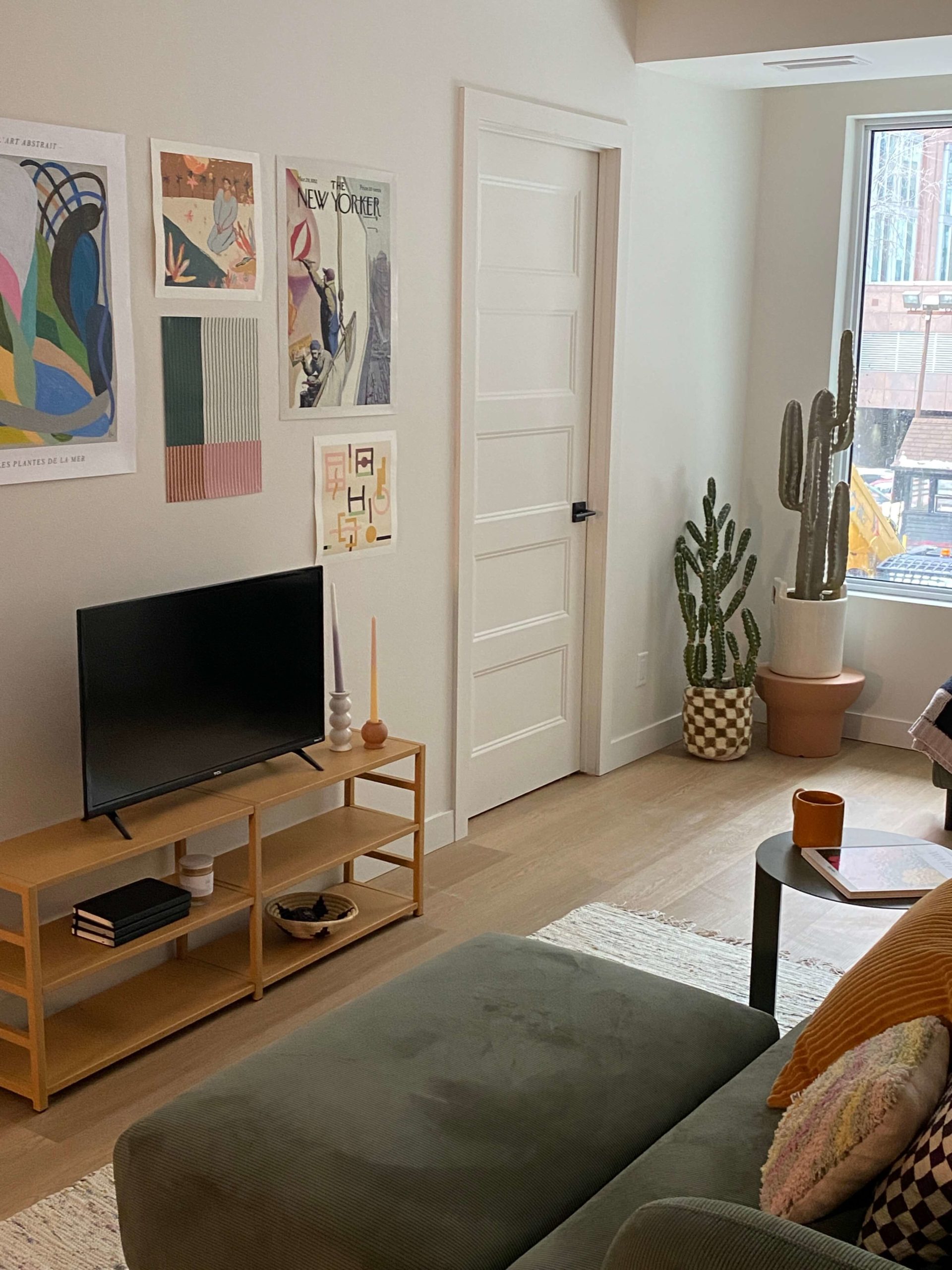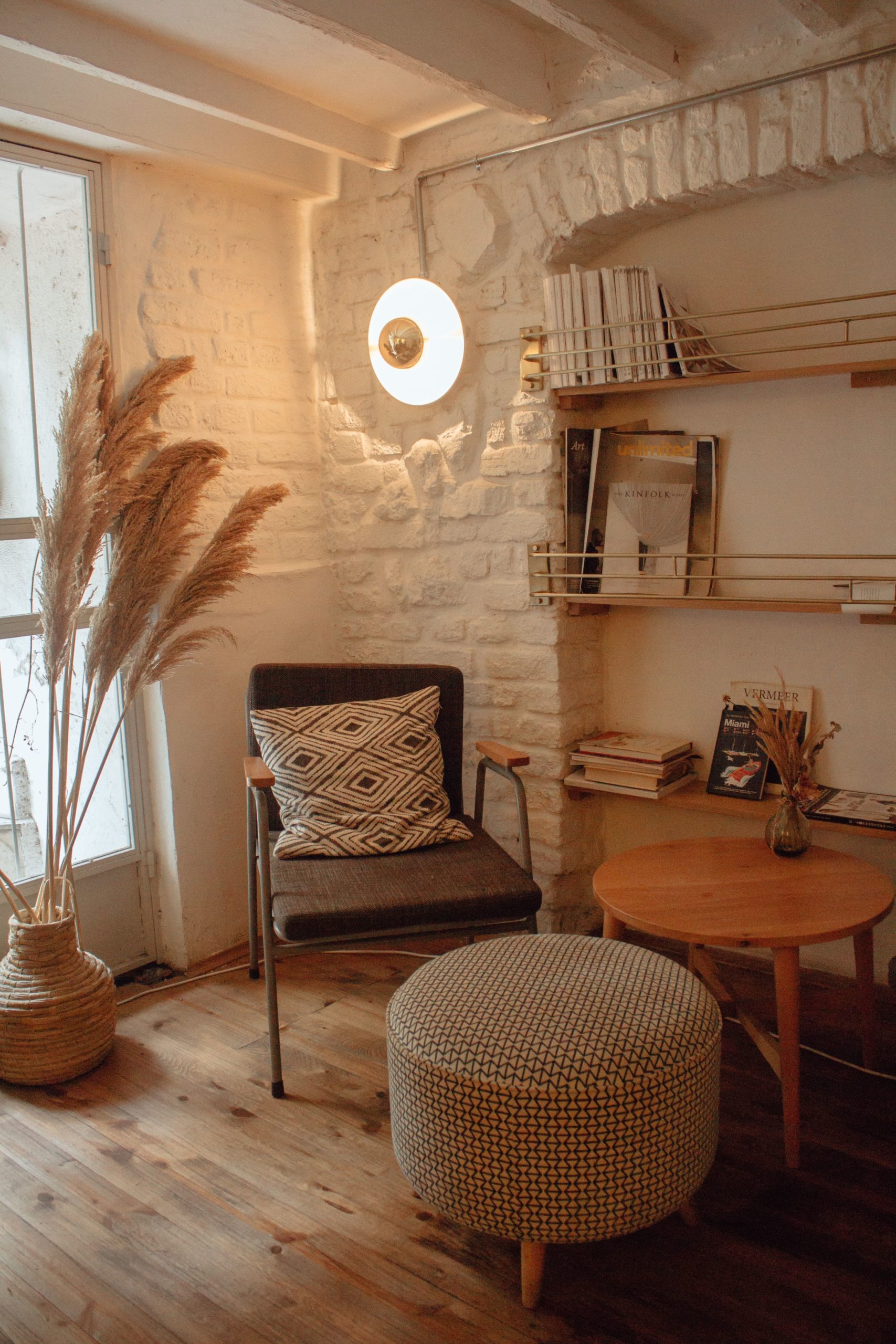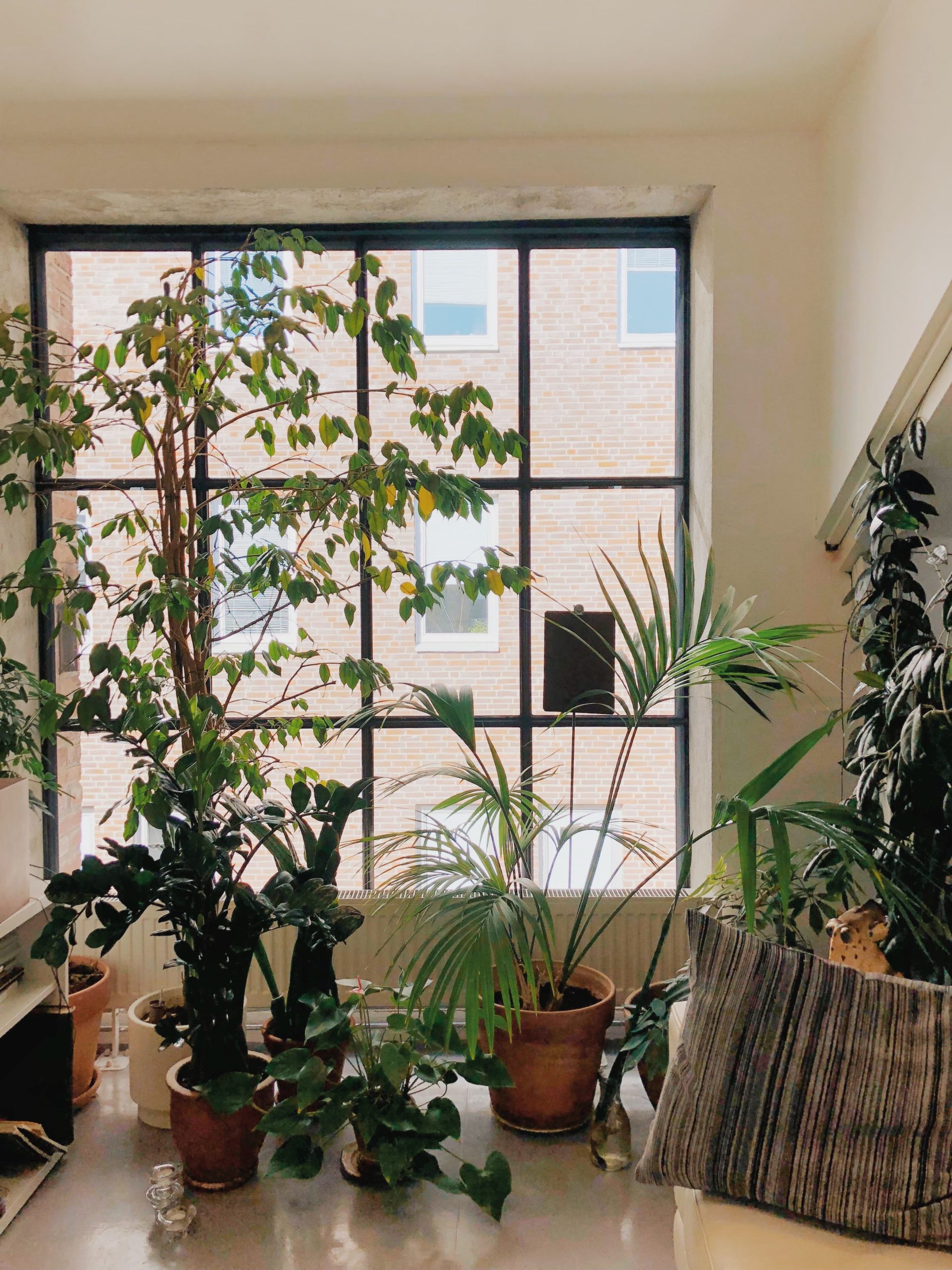This article is part of our Housing 101 Guide, a collaboration with Simplify McGill where we outline all aspects of finding and living in your first apartment in Montreal. Click here to download the full 50-page PDF!
As a student, it’s important to have somewhere cozy and inviting to come home to; a space that makes you feel safe and encourages self-discovery and creativity. With the pressures of school, the everyday chaos of university, and the struggle to balance different aspects of your life, you deserve to have a home you truly love. But the reality of apartment hunting can be…Yikes 😬. The start of finding your dream home is usually more like a nightmare. This is especially true when you’re operating on a student budget, looking to move in with roommates who have their own expectations, and don’t have unlimited time.
It isn’t all doom and gloom though. Once you’ve found your apartment, it’s exciting to figure out how you’re going to turn it into a home, one that accurately represents you and matches your ideal aesthetic. What kind of decor should you go for? How do you go about styling your place when you and your roomies have different tastes? What’s the best way to maximize storage in a small space?
We’ll be giving you some guidance in the form of tips and considerations from our very own in-house Interior Designer and International Project Development Manager, Marie-Eve Bousquet. Her knowledge and expertise will help inform your apartment search and styling process. We’re here to show you that designing your apartment can be more enriching than intimidating; it can even facilitate creative and authentic self expression.

Layout and floor plans
The beginning of your apartment hunt will probably be marked by lots of ups and downs. Don’t get discouraged, this is part of the process and is just the first step in finding your ideal home. While everyone has their own priorities and non-negotiables, before you settle on an apartment, there are a few general things you should consider.
CONSIDERATION #1:
Take into account whether you’re a morning person, or if you prefer sleeping in. Does being in a darker space affect your mood, or not particularly?
TIP #1:
If you’re an early riser, it may be good to find a space with east-facing windows so you can rise with the sun. If you prefer a brighter space, look for an apartment with larger windows in common areas and a more open-concept rather than one with closed off rooms and hallways.
CONSIDERATION #2:
An apartment may look great on paper, but damages aren’t always easily visible.
TIP #2:
Always look inside closets for black mold, check behind large items and columns for water damage, and inspect floors and walls for cracks. Don’t forget to look for holes near the baseboards; those make for ideal entryways for mice looking for a cozy new home like yours!
CONSIDERATION #3:
Having a different budget from your roomie(s) isn’t always a bad thing. If one or more of you don’t mind paying more, it could even help your apartment hunt by opening your options to different kinds of layouts.
TIP #3:
If you can’t find a potential roomie with a budget similar to yours, try finding a space with different sized rooms that will allow you to accommodate varying budgets.
Furnishings
Now that you’ve found an apartment with good bones, it’s time to fill it with furniture that’ll transform it into a cozy, liveable space. This is arguably the most intimidating part of the process, both because of the endless possibilities and because finding well-made, affordable furniture is not easy. Marie-Eve shared her process for furnishing units at University Apartments, revealing that we use commercial grade furniture and work directly with suppliers. To ensure we have well-made items that will last, we get everything prototyped first and employ multiple “destroy tests” to see what the furnishings can withstand. Now, as a student you probably don’t have the money, time, or energy to go through all this, so let us give you some hot tips.

CONSIDERATION #1:
When it comes to furniture, it’s best to invest in high quality materials that won’t wear out easily and that can survive the tumultuous nature of student life.
TIP #1:
If you don’t have the means to invest in pricey furniture, try going for something vintage at your local antique shop or even Facebook Marketplace. Modern furniture is often built to be replaced every few years as trends come and go, whereas antique furniture has been built using higher-grade materials in order to survive wear and tear. Plus, if a piece of furniture from the 20th century is still around and in good condition, what more proof do you need!
CONSIDERATION #2:
It can be difficult to visualize how larger pieces of furniture will look in your home, and how they’ll fit with your existing furniture.
TIP #2:
Before committing to a large piece of furniture like a couch or a bed, tape its dimensions down on your floor to ensure it fits properly in your space.
CONSIDERATION #3:
When designing the furnishings used in our student apartments, Marie-Eve opts for a modular living arrangement in common areas. This means going for furniture that can be moved around into various configurations within the space, allowing students to switch up the vibe depending on their mood.
TIP #3:
Try sketching the outline of your room on a piece of paper, along with cutouts of all your furnishings on separate pieces of paper (make sure the dimensions are correct and proportionate to the size of your room as sketched out). You can use these mini versions of your room and furniture to optimize your layout without having to move heavy furniture around!
Storage
I don’t know about you, but I often look around my own space and wonder when and how I acquired so much stuff. It’s not uncommon to feel inundated by the amount of things we own, and as someone who attaches sentimental value to literally everything, I get how hard it can be to manage personal space. If the apartment you’ve settled on doesn’t have sufficient closet space or enough cabinets to fit all your stuff, Marie-Eve has solutions for you.
CONSIDERATION #1:
Keep in mind that you’ll need to store larger items that you won’t need year-round, like your suitcase, winter coats, and boots, when selecting furniture for your new home.
TIP #1:
Opt for a bed that’s tall enough to store suitcases and bins underneath. You can even go for an armoire that has tons of space inside to store bulkier items. Marie-Eve recommends getting storage bins for items you don’t use year-round.
CONSIDERATION #2:
When you think about storage, you often think about tucking your belongings away and keeping them out of sight, but storage doesn’t necessarily have to be hidden.
TIP #2:
Use storage containers that are both functional and a piece of decor, like woven baskets with lids. You can also get creative with other parts of your home to create storage. “People often don’t use the height of their walls enough,” Marie-Eve states, “there’s so much you can do by adding shelves and hooks to your space.” If drilling holes isn’t an option, you can opt for adhesive hooks, standing bookshelves, armoires, and credenzas too. Marie-Eve also recommends using the backs of doors as extra storage space; you can buy over-the-door hook racks, and even over-the-door shoe organizers.

CONSIDERATION #3:
If you’re living with others, collective storage can get very messy, very fast. Some things should be stored in common spaces, like paper towels and garbage bags, but it may be easier to keep tabs on your personal items if they’re not stored in communal spaces.
TIP #3:
Always make room for storage in your own space in order to ensure your items are safe and protected from the chaos of collective storage.
CONSIDERATION #4:
Marie-Eve points out that the entrance space is often one of the messiest corners of an apartment, so she recommends prioritizing a storage solution for that area.
TIP #4:
Make sure to have a shoe rack (and a boot tray if you live somewhere snowy) in your entryway, along with somewhere to hang jackets. You can even add a cute basket near the door for items like umbrellas. Storage doesn’t have to be expensive either. Marie-Eve recommends IKEA for affordable storage solutions, as well as dollar stores and Bureau en Gros. She also recommends adding even more storage within your closets by adding extra hooks and standing shelves inside to optimize space.
Styling
Now comes the fun part. There are endless ways to transfer your personality into home decor, so don’t be afraid to get creative and find funky statement pieces that add texture, colour, and vibrancy to your space. Styling may seem overwhelming, but realistically you don’t need to buy much to make an impact. Marie-Eve explains that overstyling and overdecorating can actually make your space feel smaller, and doesn’t allow your decor to stand out. She’s a big advocate for minimalist design, since this can give your decor room to breathe. Of course, living with others who have different tastes can make things more complicated, but it doesn’t have to.
CONSIDERATION #1:
You and your roommates’ tastes in decor may clash, but there are ways to work around it.
TIP #1:
Style the common areas neutrally to avoid clashing with your roommates. To prevent neutral from becoming ✨boring✨ Marie-Eve suggests sticking to more muted colours and patterns, and opting for pieces that are timeless. She also recommends using plants and flowers (real or fake) to add brightness to your home. Another way to bypass opposing styles is using lighting as decor. Having multiple smaller light sources in your space rather than one main light allows you to add ambiance and adjust it to match your mood.

CONSIDERATION #2:
Even if you and your roomies have different tastes, don’t be afraid to get creative.
TIP #2:
You can buy funky placemats, cool kitchenware, and colourful glassware and dishes. These things won’t be on display, so your roomies may be okay with you going all out. We also encourage you to try mixing and matching your different styles because you may be surprised by how well they work together; you won’t know until you try.
CONSIDERATION #3:
Styling your space doesn’t have to mean going out and splurging on decor.
TIP #3:
Changing small details of items you already own can make a big impact. Try spray painting shelves, changing the handles on your dressers, or painting the border of a mirror you already own. Whether or not you’re handy, you can still DIY some really cool and innovative decor items. Marie-Eve also loves going to garage sales, thrift stores, antique stores, dollar stores, and even Loblaws to find unique, inexpensive items. She also suggests checking with family members (I’m sure your grandma has some cool vintage stuff laying around).
Conclusion
No matter where you live, whether it’s a fully furnished condo or a 90 year-old triplex, you can find creative and inexpensive ways to make an apartment feel like a home. These tips are meant to provide you with inspiration to transform your space and make your home an extension of yourself. From picking an apartment with an appropriate layout, to optimizing the storage space, and making it look and feel how you’ve always envisioned, there’s not a right or wrong way to approach the design of your apartment.
As students, we know how chaotic your lives can be and that things like money and time are not unlimited resources. Regardless, it’s important to prioritize the design and decoration of your home because it’s a space that should provide you with comfort, stability, and joy. While Marie Kondo’s adage, “does this spark joy?” is meant to help you declutter your home, this same philosophy can be applied to your apartment. If you ask yourself, “does my home spark joy in my life?” the answer should always be yes.







